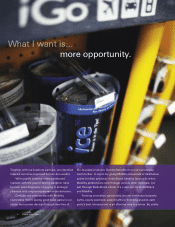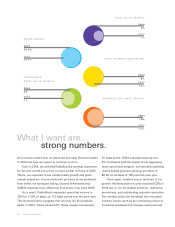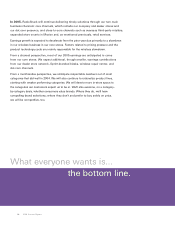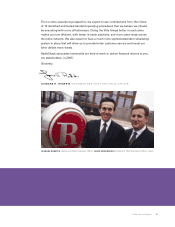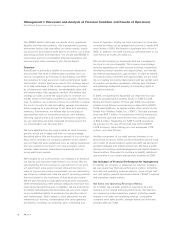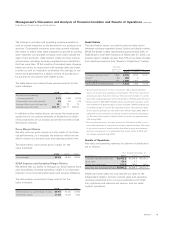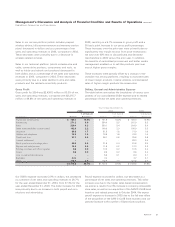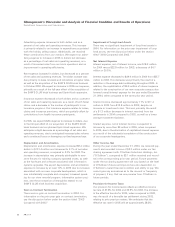Radio Shack 2004 Annual Report Download - page 15
Download and view the complete annual report
Please find page 15 of the 2004 Radio Shack annual report below. You can navigate through the pages in the report by either clicking on the pages listed below, or by using the keyword search tool below to find specific information within the annual report.
keep average selling prices stable. Also, the number of subscribers rose
while average revenue per user remained steady. In other words, more
people joined the Verizon and Sprint networks and collectively spent
just as much per person as before. That trend had great implications for
our residual model – a form of compensation we receive based on the
spending of subscribers to whom we sold handsets.
Digital imaging became an important sales driver for us as well.
Though not extremely large, the business grew extremely fast. In
just two years, digital imaging has grown from virtually nothing at
RadioShack to a business in excess of $100 million. We’ve grown this
business by putting our resources to work: display space, advertising,
and training. Digital imaging is a great fit for RadioShack because it’s
an emerging consumer electronics business
whose products are small in size, necessitate
answers, and require accessories.
Many other categories, such as home
networking, power products, MP3 players,
and satellite radio, also contributed to our
strong 2004 financial results. Categories
that delivered less than satisfactory results
included home entertainment, gifts, toys,
and technical parts. To deliver favorable
results again in 2005, we intend to improve
how we go to market in these areas.
200 4 An nual Rep ort 13





